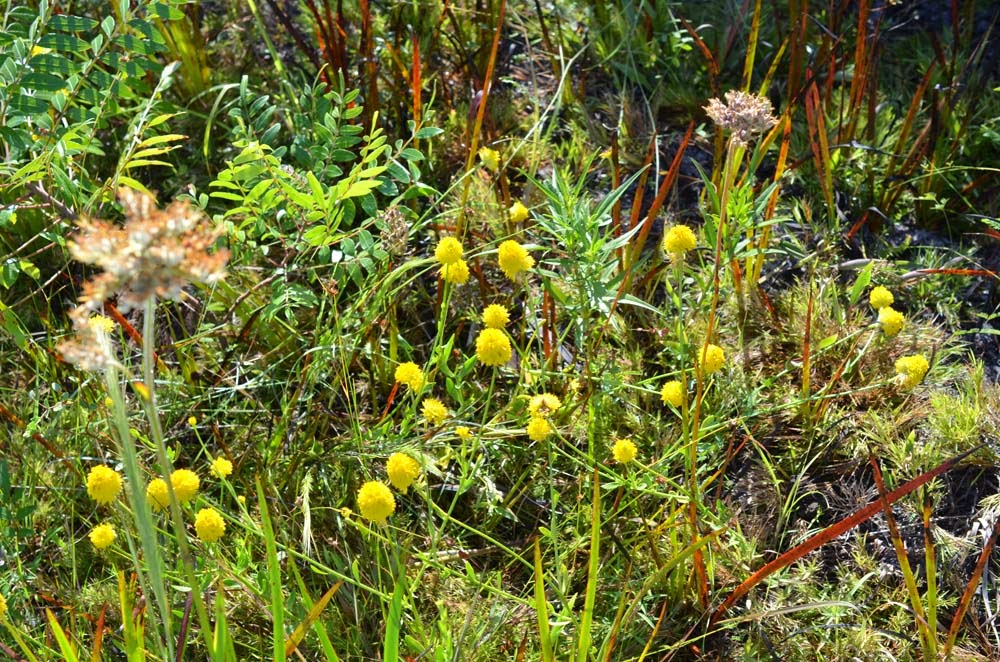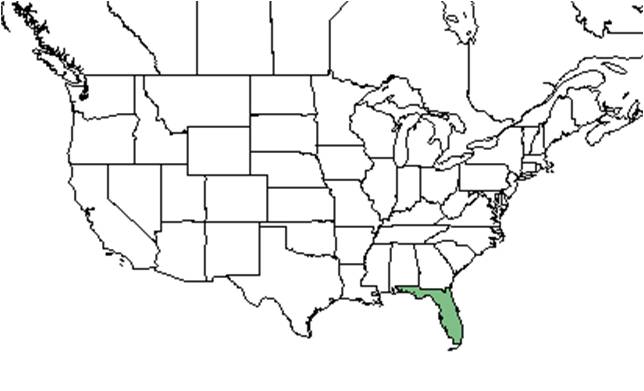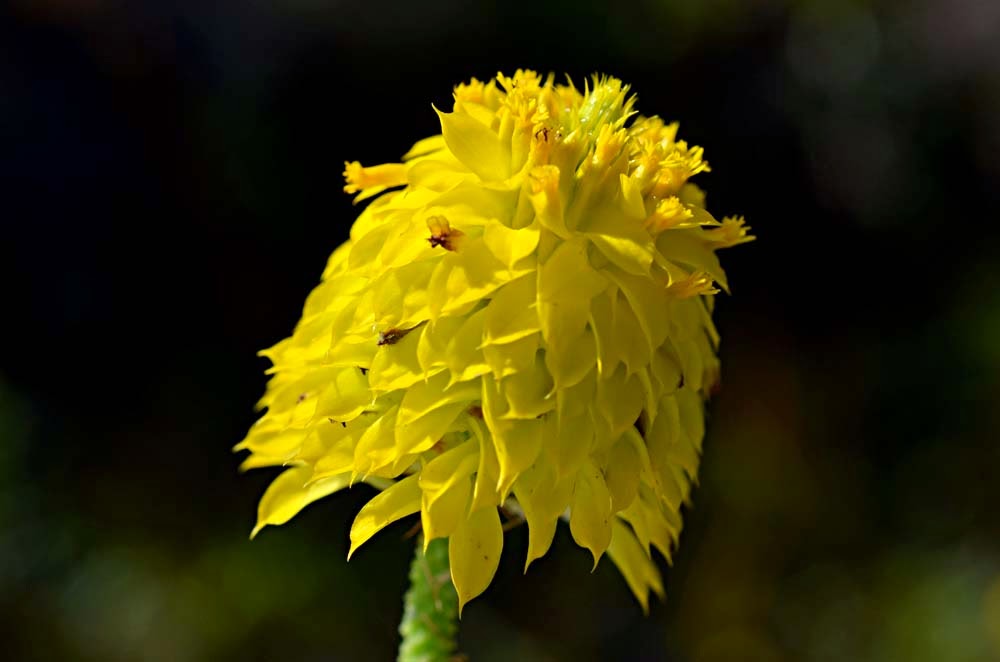Difference between revisions of "Polygala rugelii"
Krobertson (talk | contribs) (→Description) |
Krobertson (talk | contribs) (→Distribution) |
||
| Line 29: | Line 29: | ||
==Distribution== | ==Distribution== | ||
| − | ''P. rugelii'' is endemic to the Florida peninsula<ref name="hawthorn">[[http://hawthornhillwildflowers.blogspot.com/2010/11/yellow-milkwort-polygala-rugelii.htm]] Native Florida Wildflowers. Accessed: February 22, 2016</ref> | + | ''P. rugelii'' is endemic to the Florida peninsula.<ref name="hawthorn">[[http://hawthornhillwildflowers.blogspot.com/2010/11/yellow-milkwort-polygala-rugelii.htm]] Native Florida Wildflowers. Accessed: February 22, 2016</ref> |
==Ecology== | ==Ecology== | ||
Revision as of 14:17, 18 August 2016
| Polygala rugelii | |
|---|---|

| |
| Photo by Wayne Matchett, SpaceCoastWildflowers.com | |
| Scientific classification | |
| Kingdom: | Plantae |
| Division: | Magnoliophyta - Flowering plants |
| Class: | Magnoliopsida – Dicotyledons |
| Order: | Fabales |
| Family: | Polygalaceae |
| Genus: | Polygala |
| Species: | P. rugelii |
| Binomial name | |
| Polygala rugelii Shuttlw. ex Chapm. | |

| |
| Natural range of Polygala rugelii from USDA NRCS Plants Database. | |
Common name: yellow milkwort
Contents
Taxonomic notes
Synonym: Pilostaxis rugelii (Shuttleworth ex Chapman) Small
It is named for the German botanist, Ferdinand Rugel, who collected plants in Florida during the early 1800s.[1]
Description
P. rugelii is an annual species, however, sometimes can be a biennial. In the spring, the irregular rosette is composed of spatulate leaves. The flower stalk arises in summer and the basal rosette will disappear. The stalk can reach 1 to 3 feet high and is often branched.[2]
Distribution
P. rugelii is endemic to the Florida peninsula.[2]
Ecology
Habitat
In the Coastal Plain in Florida, P. rugelii can occur in wiregrass/saw palmetto/pine associations, cypress bays and flatwood marshes. It has occurred in disturbed areas such as cleared pine flatwoods and a recently timber harvested bayhead. It grows in peaty-sandy soil. Associated species include wiregrass, saw palmetto, pine, and cypress. [3]
Phenology
Flowers late summer to early fall[2].
Fire ecology
Following a fire, flowering of P. rugelii is conspicuous. [4]
Pollination
The following Hymenoptera families and species were observed visiting flowers of Polygala rugelii at Archbold Biological Station: [5]
Apidae: Mellisodes communis
Halictidae: Augochlorella gratiosa
Megachilidae: Megachile brevis pseudobrevis
Sphecidae: Ammophila pictipennis
Conservation and management
Cultivation and restoration
Photo Gallery
Flowers of Polygala rugelii Photo by Wayne Matchett, SpaceCoastWildflowers.com
References and notes
- ↑ [[1]]All Things Plants. Accessed: February 20, 2016
- ↑ 2.0 2.1 2.2 [[2]] Native Florida Wildflowers. Accessed: February 22, 2016
- ↑ Florida State University Robert K. Godfrey Herbarium database. URL: http://herbarium.bio.fsu.edu. Last accessed: November 2015. Collectors: A. Gholson Jr., Robert K. Godfrey, R.A. Norris, A.G. Shuey. States and Counties: Florida: Gilchrist, Manatee, Volusia. Compiled by Tall Timbers Research Station and Land Conservancy.
- ↑ Abrahamson, W. G. (1984). "Species Responses to Fire on the Florida Lake Wales Ridge." American Journal of Botany 71(1): 35-43.
- ↑ Deyrup, M.A. and N.D. 2015. Database of observations of Hymenoptera visitations to flowers of plants on Archbold Biological Station, Florida, USA.
